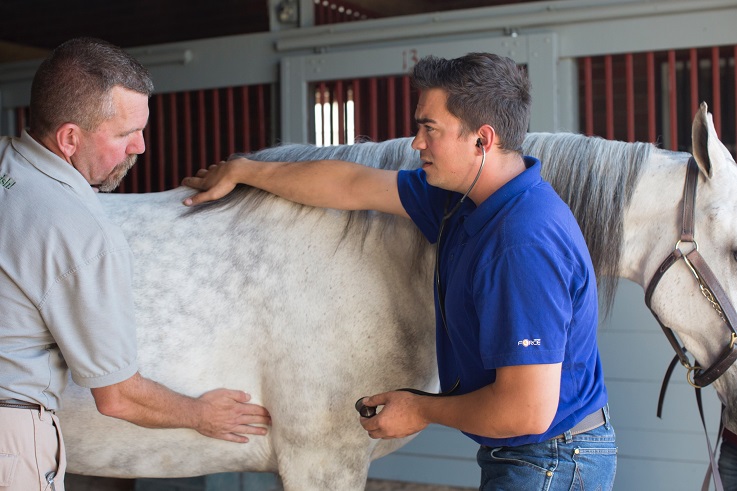Need-to-know safety skills for pre-veterinary majors interested in equine medicine

For pre-vet majors at William Woods University interested in pursuing a veterinary career specialization in equine medicine or equine dentistry, it is important to not only look out for the well-being of the horse, but for their own safety and well-being when they handle these large and powerful patients.
In efforts to make veterinary visits go as smoothly as possible, equine professionals recommend that all care takers and horse owners “acclimate [their] horse to veterinary and farrier visits before they actually happen, using positive reinforcement to reward tolerance of simulated farrier or veterinarian procedures… it’s really never too late to start teaching a horse how to be comfortable with any of the routine health care and veterinary procedures.”
After acquainting themselves with patients, here are three safety procedures equine veterinarians should practice to ensure both their well-being, and the well-being of the horse:
1. Use a handler
As an equine vet, it is wise to request the assistance of a handler as you conduct examinations or procedures on your equine patient, making sure someone has a secure hold on the horse’s lead lines in case the horse gets startled.
Ask the handler to stand on the same side of the horse that you are working on. This way, if the horse makes any dangerous or abrupt movements, the handler is positioned to direct the hindquarters away from you by simply drawing the horse’s head toward his or her self.
2. Establish a safe environment
It is important to consider your work environment and make all possible arrangements to ensure it is conducive to the type of work you will be doing and is safe for patient, vet and handler.
A major precaution vets must take is making sure the work space is free of hazards or entrapments. Use an area large enough for both horse, vet and handler and a space that offers ample room to step back or exit the area in the case the horse becomes agitated.
3. Minimize distractions
The quieter the work environment, the lower the energy and tension level of the horse and everyone involved. This may require you to ask that barking dogs be removed from the area, cell phones be turned on silent, and foot traffic be rerouted away from the work space.
Other tips to keep in mind for reducing distractions are to request that the horse handler use fly spray on the horse or runs a fan during fly season to keep the horse from becoming agitated, and avoid scheduling appointments during feeding times when the horse will become impatient.
Few educational institutions can match what William Woods University offers students in terms of access to on-campus equine facilities, more than 150 horses that represent the most popular breeds, and its Center for Equine Medicine and full-time, on-site veterinarian. As a pre-vet student, these facilities afford you an optimal learning environment to familiarize yourself with future patients and begin to identify safety practices and proper work environments to provide equine care.

